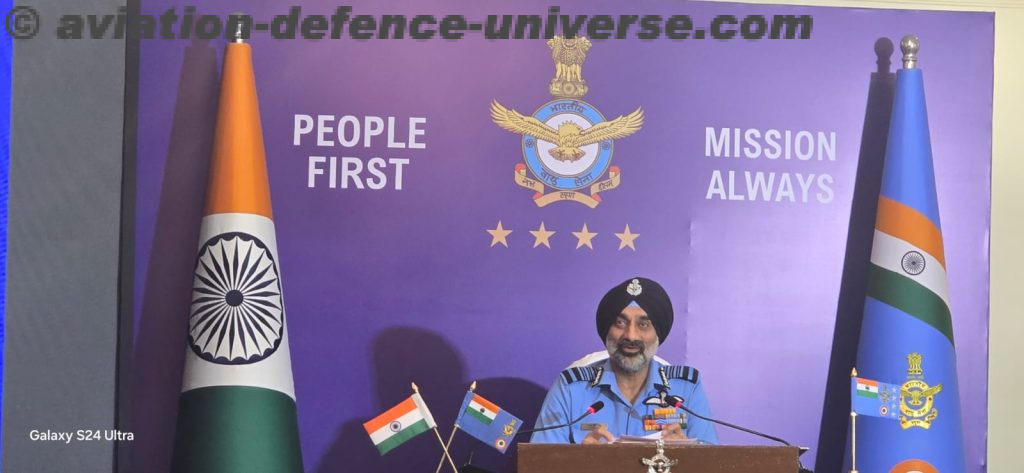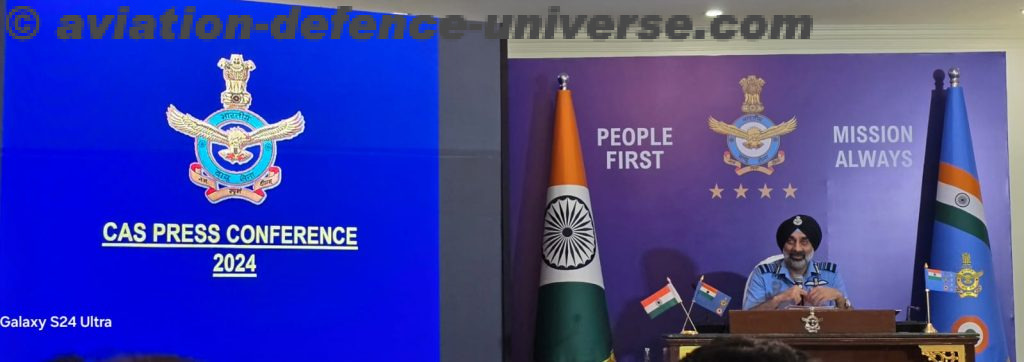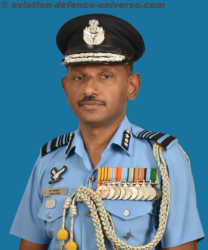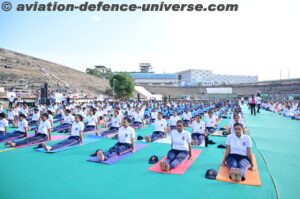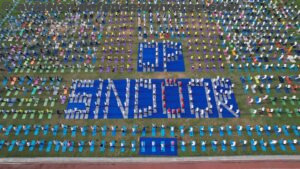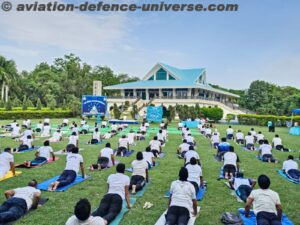By Sangeeta Saxena
New Delhi. 04 October 2024. It was an IAF Chief’s first press conference with a difference. The atmosphere was happy , with the ever smiling Chief , who played the googlies of the media with ease unbelievable. His reaction to a question on Indian Air Forces’ confidence on taking on China, “ So, you want us to be under-confident? The fact is that we have done our analysis. We don’t have a desire to go offensive unnecessarily. Only when we are pushed, we will be doing something. So, we have our plans in place. One place we can positively say, we are training much better than that. We have exposure much better than that. Because we do come to know through our sources about how they train, how many different air forces they interact with and how many do we interact with. So, I am very confident that as far as human ideal is concerned, as far as our people behind the machine are concerned, we are way ahead of them.”
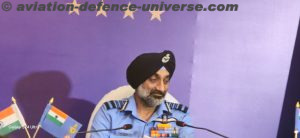 The CAS highlighted the critical role of the engine as a major component of any aircraft, emphasizing how it significantly impacts serviceability and availability during wartime, in response to a question. Engine design and production are controlled by only a few countries worldwide, with even fewer design houses specializing in engine technology. These design houses typically do not share the core competencies or key design elements of their engines with production agencies. This dependency can severely limit the availability of weapon systems or aircraft during crucial times. He stressed that once engines are designed and produced domestically in India, it will drastically alter the country’s approach to aviation and defence manufacturing. Currently, even if engines are produced by HAL, certain components still need to be sourced from abroad, which could be a vulnerability in times of need. He emphasized the importance of developing indigenous engine capabilities rapidly. Successfully designing and developing one engine would boost confidence, enabling further production based on specific requirements.
The CAS highlighted the critical role of the engine as a major component of any aircraft, emphasizing how it significantly impacts serviceability and availability during wartime, in response to a question. Engine design and production are controlled by only a few countries worldwide, with even fewer design houses specializing in engine technology. These design houses typically do not share the core competencies or key design elements of their engines with production agencies. This dependency can severely limit the availability of weapon systems or aircraft during crucial times. He stressed that once engines are designed and produced domestically in India, it will drastically alter the country’s approach to aviation and defence manufacturing. Currently, even if engines are produced by HAL, certain components still need to be sourced from abroad, which could be a vulnerability in times of need. He emphasized the importance of developing indigenous engine capabilities rapidly. Successfully designing and developing one engine would boost confidence, enabling further production based on specific requirements.
In response to a question the IAF Chief stated, “ When it comes to building the capacity, you know, one is capability, other one is capacity. So, building the capacity, it becomes important for our manufacturing agencies to, you know, come forward and increase their production rate. And when it comes to conflict situations, if you are relying on getting your weapons from outside, there will always be, you know, different interests and changing interests which can create a choke point for you. So, if you need to actually fight the war the way you said 200-300 missiles being fired in one day, you have to have them being manufactured in India. You cannot afford to have them being bought and, you know, rely on that supply chain. So, from that point of view, it is imperative that we have these things being produced in India. And, you know, under some kind of confidence we should have that when we have to, because we can’t be stocking up everything forever. These things will have life. We keep stocking up, then we will have wastage. So, you need to stock up for a immediate reaction and have a system in place where by the time you consume that stock, the industry is now producing at a rate which can continue giving you that benefit.”
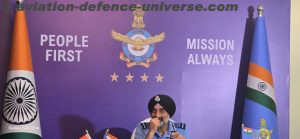 He reiterated the importance of airborne early warning and control systems, describing them as vital force multipliers and stated that currently there are three Embraer-base, AEW&C aircraft in service. Plans are in place to acquire six more. These additional aircraft will also be purchased from Embraer and the modifications will be carried out by DRDO, specifically by the Centre for Airborne Systems (CABS). He emphasized that this is a proven design, ensuring minimal risk and maximum effectiveness, and expects final clarifications on this plan soon.
He reiterated the importance of airborne early warning and control systems, describing them as vital force multipliers and stated that currently there are three Embraer-base, AEW&C aircraft in service. Plans are in place to acquire six more. These additional aircraft will also be purchased from Embraer and the modifications will be carried out by DRDO, specifically by the Centre for Airborne Systems (CABS). He emphasized that this is a proven design, ensuring minimal risk and maximum effectiveness, and expects final clarifications on this plan soon.
Additionally he mentioned that as far as the AEW&C Mark 2, which is based on an Airbus platform, is concerned, contract negotiations with Airbus are currently underway, and the process is in the CNC (Contract Negotiation Committee) phase. Once finalized, Airbus will be responsible for modifying the aircraft, while DRDO is developing the onboard equipment in parallel. The initial contract for modification will be signed between DRDO and Airbus. So, that negotiations are at the moment on to come to the correct configuration as well as the price negotiations, he added.
In response to a question CAS addressed the need for a replacement for the aging AN-32 and IL-76 medium transport aircraft fleets. A decision has been made to procure a common aircraft in the 18 to 30-ton class. An RFP (Request for Proposal) has already been issued for this requirement, although no specific aircraft has been shortlisted yet. He also informed that the S-400 air defence system is already in India and that three units are fully operational. The next two units, initially delayed due to the Russia-Ukraine conflict, are now promised for delivery next year. The Chief expressed optimism about receiving these units on time, reaffirming the commitment to this acquisition.
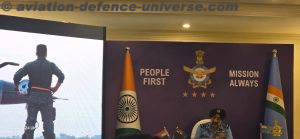 Responding to the status of MFRA he confirmed that the RFI was issued. “We have got the response from everybody. We made the requirement here. Now, we are waiting for the decision to be taken as to what route we will follow. So, at the moment we are going to follow that 2020 route where the RFI will be issued and hopefully we will get the response fast and go ahead with this aircraft. So, there is a requirement to have it made in India. That is something which we have very clearly stated in that. The aircraft has to be made in India. And because of that the people who have to respond have to find an Indian partner and, you know, make it happen that way. That is where we are.”
Responding to the status of MFRA he confirmed that the RFI was issued. “We have got the response from everybody. We made the requirement here. Now, we are waiting for the decision to be taken as to what route we will follow. So, at the moment we are going to follow that 2020 route where the RFI will be issued and hopefully we will get the response fast and go ahead with this aircraft. So, there is a requirement to have it made in India. That is something which we have very clearly stated in that. The aircraft has to be made in India. And because of that the people who have to respond have to find an Indian partner and, you know, make it happen that way. That is where we are.”
ACM AP Singh emphasized that the only way to tackle future challenges is by moving forward and adapting. “With the increasing use of non-conventional weapons, it is crucial to ensure they are available in the inventory and to simultaneously develop countermeasures. Non-kinetic and non-conventional warfare have become standard practices, and the Chief noted that they are fully aware of these shifts. As a result, initiatives like the Meher Baba competition have been launched to enhance drone capabilities and acquire advanced drone technology. Regarding cyber security and information warfare, efforts are ongoing to strengthen these areas. There is no quick solution. The process of selecting and inducting new aircraft is time-consuming, and even after induction, training is necessary to fully utilize them. The current focus, according to the Chief, is on maximizing the capability of existing resources, with an emphasis on proper training and the preservation of available assets. Ensuring that personnel are trained to use these assets effectively is a priority, and this mindset is being instilled across the force,” he stated.
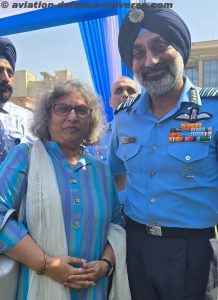
On being asked what will be his priorities as the Chief of Air Staff he reacted, “ organization is bigger than any appointment. So, with just a change of chief, you know, the priorities don’t change. The priorities will still remain the same. We need to continue moving forward in terms of handling the current situation, finding some short-term solutions to the problems that we are facing in terms of maintenance and upkeep of our equipment. At the same time, progressing towards having equipment that can make us more self-reliant and hard labour. So, that remains our priority as far as equipment and weapon systems are concerned. And also focusing on individuals, focusing on putting the best person at the right job is something that we need to focus on in terms of extracting the best out of the equipment that we buy or the weapon system that we have.”
In his first press conference, IAF Chief Air Chief Marshal AP Singh outlined the Indian Air Force’s plans for future preparedness, highlighting the need for indigenous development in key areas such as engine production, drone capabilities, and advanced aircraft systems. Addressing both conventional and non-conventional threats, the Chief emphasized the importance of self-reliance in defence manufacturing, particularly in critical areas like missile production and transport aircraft replacements. He acknowledged challenges such as depleting fighter strength and slow procurement processes but reaffirmed that the IAF is focused on maximizing current resources through improved training and asset preservation. Emphasizing that organizational priorities remain unchanged, ACM Singh stressed the need for long-term solutions, including modernizing equipment and enhancing personnel effectiveness.
This press conference was in run up to the 92nd Airforce Day scheduled for 8th October, which will this year be hosted at Chennai . The nation will join as the Airforce showcases its formidable strength and aerial might, by a flypast above Marina Beach.